National Museum (Galleries) Part-I:
Building of National Museum:
Harappan Gallery
The Museum has various artefacts from theHarappan Civilization also known as Indus Valley Civilization or Indo- Saraswati. The whole collection of this gallery represents the advanced technology and sophisticated lifestyle of the Harappan people. Most of the objects on display are permanent loans from the Archaeological Survey of India. Most prominent among the objects are the Priest Head, the Dancing Girl made in Bronze and belongs to the early Harappan period, Skeleton excavated from Rakhigarhi inHaryana, Terracotta images of Mother Goddess and Clay Pottery. Apart from these the gallery has Sculptures in Bronzes & Terracotta, Bone Objects, Ivory, Steatite, Semi-Precious Stones, Painted Pottery and Jewellery items.[7][8] Many seals have been discovered during numerous excavations. These seals were probably used for trading purposes. These seals depict bulls, elephants, unicorns, tigers, crocodiles, unknown symbols. On one of the seal, there is the depiction of Pasupati (Proto-Shiva of present age) The gallery presents the vibrancy of human civilization in India at par with the contemporary civilizations of Mesopotamia,Egypt and China.
Among the artefacts, the most significant is the Dancing Girl which is a 4.5 inch bronze statue. It was discovered from Mohenjodaro. The name Dancing Girl was coined by Sir John Marshall. It is made by the Lost Wax Method. The Chola bronzes and the Dhokracastings are still made this way.
Maurya, Shunga and Satvahana Arts Gallery
The gallery has objects from the 4th century BCE to the 1st century BCE. It has objects spanning three major dynasties; TheMauryas, the Shungas and the Satvahanas. Objects in the gallery have Greek influence characterized by the mirror like finishing. The gallery also houses fragments of railings from various ancient Stupas that are carved on with episodes from Buddha's Life. A major object is the one showing Sage Asita's visit to baby Siddharta and the Bharhut railings that depicts the story related to the Relics associated with Buddha by the sage Drona. A typical feature of the period to which objects in the gallery belongs to is that the sculpture do not depict Buddha in the physical form. He is always shown using symbols like theDharmachakra, the Bodhi tree, empty throne, footprints, etc.
Kushana Gallery
This gallery has art objects from the Kushanperiod (1st - 3rd century CE). The major school of arts were the Gandhara School of Art and the Mathura School of Art. The Gandhara school had huge influence of GreekIconography and the themes were mainly Buddhist. Most prominent among the objects is the Standing Buddha, made in Grey schiststone in Gandhara School of Arts and it belongs to the 2nd century CE. This period was the first time when Buddha was shown in physical form. The Mathura school of arts had primary themes of Buddhism, Jainismand Brahmanism while the Gandhara Arts were primarily of Buddhist themes. Other sculptures include the Kuber (Hindu god of Fortune), the Chattramukhi Shivlinga, theBodhisattva, and the Jain votive plaques.
Gupta Gallery
As the name suggests, this gallery exhibits artefacts from the Gupta Dynasty (4th-6th centuries CE). Mathura and Sarnath were the main centres of artistic activity. Under the patronage of Gupta rulers, sculptures attained a perfection of form that set the standard for artistic beauty for the coming centuries. Major developments in iconography took place during this period. The sculptures started depicting beautifully proportioned figures with clear features.
At the entrance, there are two statues made of terracota. The statues are of Goddesses Ganga and Yamuna. Ganga stands on her vehicle, Makara, which is a hybrid creature having the body of a crocodile and the tail of a fish and she holds a full pot of water. On the other hand, Yamuna stands on her vehicle which is a turtle and she also holds a pot of water. They were placed at the entrance of temple symbolizing a dip in the sacred rivers for purification.
- Sculptures depicting scenes from the epics of Ramayana and Mahabharata
- Sculptures of Hindu Gods and Goddesses
Medieval Arts Gallery
The sculptures from the Medieval Period are divided into two categories: Early and Late. The artefacts from the respective periods are divided into two galleries.
Early Medieval Artefacts
This gallery has sculptures ranging from the 7th to 10th centuries. After the fall of theGupta empire, the Indian subcontinent was divided and it was controlled by different dynasties in different parts of India like
- Palas in the East
- Maitrakas in the West
- Vardhanas and Pratiharas in the North
- Pallavas, Cholas and Chalukyas in the South
There was a general decline in the artistic quality because of the limited number of master craftsmen and the large number of temples being built.
Late Medieval Artefacts
This gallery has sculptures ranging from the 10th to 13th centuries. The country was further sub divided into a number of separate principalities during this period.
- Hoysalas and Nayakas in the South
- Paramars and Chandelas in the North
- Gajapatis and Senas in the East
- Chauhans and Chahamanas in the West
The main artefacts in this gallery are:
- Sun God
- Saraswati, the Goddess of Music, Learning and Intelligence. Carved in Marble, the statue from Pallu, Rajasthan is a highly sophisticated and delicate work.
For home loans, please click here:
https://linksredirect.com/?pub_id=11719CL10653&url=http%3A//instantloan.pnbhfl.com/home-loan-enquiry
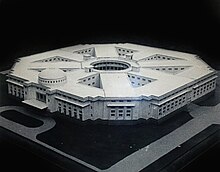
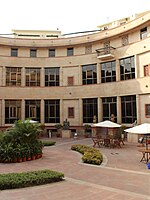

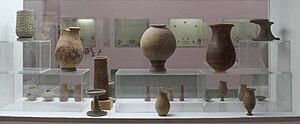





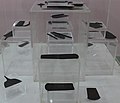









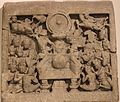























No comments:
Post a Comment